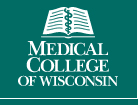Light-Emitting Diode Therapy in Preventing Mucositis in Children Receiving Chemotherapy With or Without Radiation Therapy Before Bone Marrow Transplantation
| Status: | Recruiting |
|---|---|
| Conditions: | Ovarian Cancer, Cancer, Cancer, Chronic Pain, Brain Cancer, Blood Cancer, Lymphoma, Hematology, Kidney Cancer, Leukemia |
| Therapuetic Areas: | Hematology, Musculoskeletal, Oncology |
| Healthy: | No |
| Age Range: | 2 - 18 |
| Updated: | 4/2/2016 |
| Start Date: | January 2002 |
A Multiinstitutional Trial To Evaluate The Prophylactic Use Of NASA-Developed Light Emitting Diodes For The Prevention Of Oral Mucositis In Bone Marrow Transplant Patients
RATIONALE: Light-emitting diode (LED) therapy may be able to prevent mucositis of the mouth.
PURPOSE: Randomized phase II trial to determine the effectiveness of LED therapy in
preventing mucositis of the mouth in children who are receiving chemotherapy with or without
radiation therapy before donor bone marrow transplantation.
PURPOSE: Randomized phase II trial to determine the effectiveness of LED therapy in
preventing mucositis of the mouth in children who are receiving chemotherapy with or without
radiation therapy before donor bone marrow transplantation.
OBJECTIVES:
- Compare the incidence and severity of oral mucositis in children undergoing
NASA-developed light-emitting diode (LED) therapy during a pre-transplantation
myeloablative conditioning regimen (chemotherapy with or without radiotherapy) and
continuing through the post-bone marrow transplantation (BMT) phase versus LED therapy
during the post-BMT phase only.
OUTLINE: This is a randomized, double-blind, multicenter study. Patients are stratified
according to participating center and cheek being treated (right vs left). Patients are
randomized to 1 of 2 schedules of light-emitting diode (LED) therapy.
- Arm I: Patients undergo LED therapy for 71 seconds once daily beginning on day 1 of the
myeloablative conditioning regimen comprising chemotherapy with or without radiotherapy
and continuing for 14 days after bone marrow transplantation (BMT).
- Arm II: Patients undergo LED therapy as in arm I beginning on the day of BMT (day 0)
and continuing for 14 days after BMT.
Photographs are taken of the right and left buccal mucosa at baseline and then every 3 days
beginning on day 1 of LED therapy.
Pain and xerostomia are assessed using the Wong-Baker "smiley-face" pain scale at baseline
and then periodically for 14 days after BMT.
Patients are followed monthly for 2 years.
PROJECTED ACCRUAL: A total of 80 patients (40 per arm) will be accrued for this study within
2 years.
- Compare the incidence and severity of oral mucositis in children undergoing
NASA-developed light-emitting diode (LED) therapy during a pre-transplantation
myeloablative conditioning regimen (chemotherapy with or without radiotherapy) and
continuing through the post-bone marrow transplantation (BMT) phase versus LED therapy
during the post-BMT phase only.
OUTLINE: This is a randomized, double-blind, multicenter study. Patients are stratified
according to participating center and cheek being treated (right vs left). Patients are
randomized to 1 of 2 schedules of light-emitting diode (LED) therapy.
- Arm I: Patients undergo LED therapy for 71 seconds once daily beginning on day 1 of the
myeloablative conditioning regimen comprising chemotherapy with or without radiotherapy
and continuing for 14 days after bone marrow transplantation (BMT).
- Arm II: Patients undergo LED therapy as in arm I beginning on the day of BMT (day 0)
and continuing for 14 days after BMT.
Photographs are taken of the right and left buccal mucosa at baseline and then every 3 days
beginning on day 1 of LED therapy.
Pain and xerostomia are assessed using the Wong-Baker "smiley-face" pain scale at baseline
and then periodically for 14 days after BMT.
Patients are followed monthly for 2 years.
PROJECTED ACCRUAL: A total of 80 patients (40 per arm) will be accrued for this study within
2 years.
DISEASE CHARACTERISTICS:
- Patients undergoing a myeloablative conditioning regimen comprising chemotherapy with
or without radiotherapy prior to a first allogeneic bone marrow transplantation
PATIENT CHARACTERISTICS:
Age:
- 2 to 18
Performance status:
- Not specified
Life expectancy:
- Not specified
Hematopoietic:
- Not specified
Hepatic:
- Not specified
Renal:
- Not specified
Pulmonary:
- No pulmonary dysfunction that would increase significantly the risk of requiring
intubation during the first 21 days after transplantation
Other:
- Not pregnant
- Negative pregnancy test
- Fertile patients must use effective contraception
- No photophobia
- Must have emotional, cognitive, and mental maturity sufficient to tolerate
light-emitting diode therapy application and oral examination without combativeness
PRIOR CONCURRENT THERAPY:
Biologic therapy:
- See Disease Characteristics
Chemotherapy:
- See Disease Characteristics
Endocrine therapy:
- Not specified
Radiotherapy:
- See Disease Characteristics
Surgery:
- Not specified
Other:
- No concurrent medication that may cause epidermal or ocular photosensitivity
We found this trial at
1
site
8800 W. Doyne Avenue
Milwaukee, Wisconsin 53226
Milwaukee, Wisconsin 53226
(414) 805-6840

Medical College of Wisconsin Cancer Center Cancer touches everyone in our community, and for many,...
Click here to add this to my saved trials